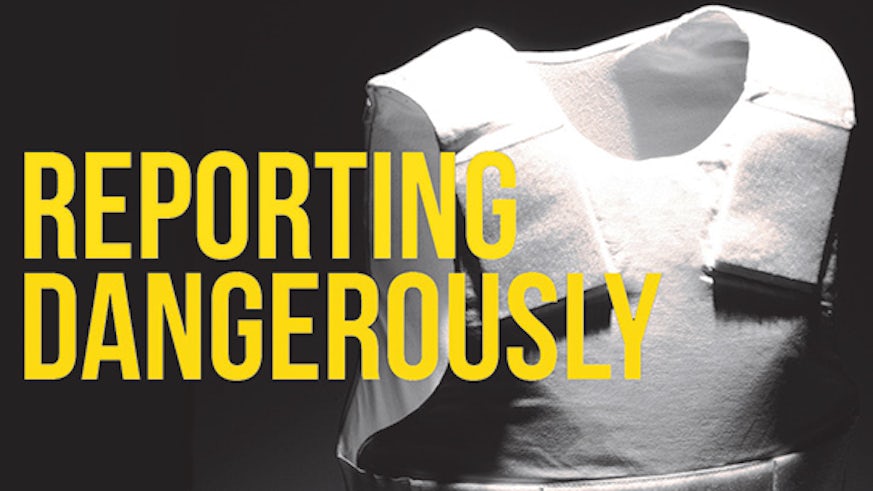Reporting Dangerously: Journalist Killings, Intimidation and Security
20 Mehefin 2016

According to the International News Safety Institute, on average two journalists a week have lost their lives doing their job over the last decade.
Most of those killed are not the international reporters who can make global headlines, but local journalists investigating crime or corruption. More journalists are being killed, attacked and intimidated than at any time in history, and this book sets out to find why.
In Reporting Dangerously: Journalist Killings, Intimidation and Security, 30-year BBC veteran Professor Richard Sambrook and fellow academics in the School of Journalism, Media and Cultural Studies at Cardiff University, Professor Simon Cottle and Nick Mosdell, examine journalist killings and intimidation around the world.
Journalists, by the nature of their work, have always put themselves in harm’s way, and some have had to pay the ultimate price for doing so. However, a number of factors have significantly increased the risks they face through the last years of the 20th century and early years of the 21st. This book identifies what factors have led to this rise and positions these in historical and global contexts.
Professor Sambrook said, “Reporting Dangerously provides case studies and first-hand accounts from journalists working in some of the most high-risk places in the world today and seeks to understand the different pressures they must confront.
“The book gives voice to journalists who have experience in reporting from conflict zones and unstable societies, hearing their experiences and candid reflections on why they do it and how they seek to protect themselves.
“It also examines industry and political responses to these trends and pressures as well as the latest international initiatives aimed at challenging cultures of impunity and keeping journalists safe.”
The authors argue that journalism contributes a vital if often neglected role in the formation and conduct of civil societies. This is why reporting from ‘uncivil’ places matters and this is why journalists are often positioned in harm’s way. They argue that the responsibility to report in a globalizing world of crises and human insecurity, and the responsibility to try and keep journalists safe while they do so, belongs to all of us.
Reporting Dangerously is published by Palgrave Macmillan.



